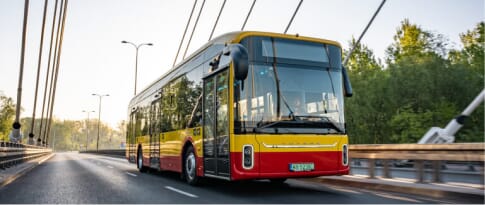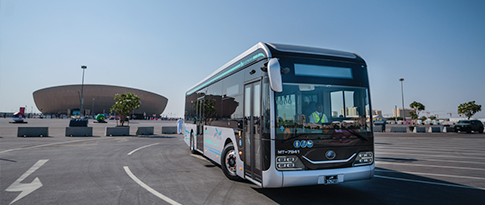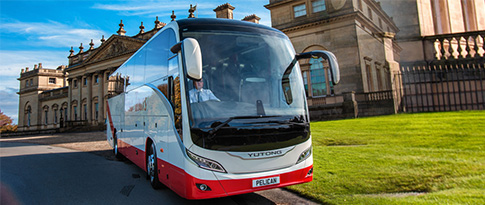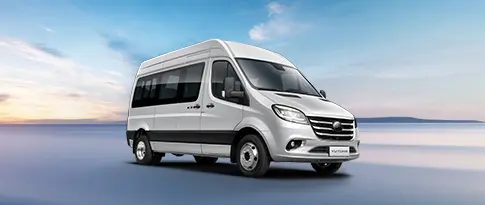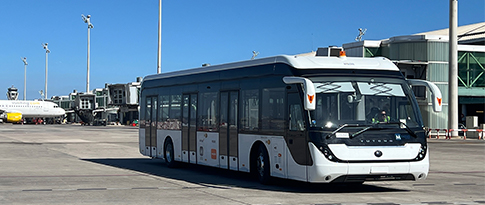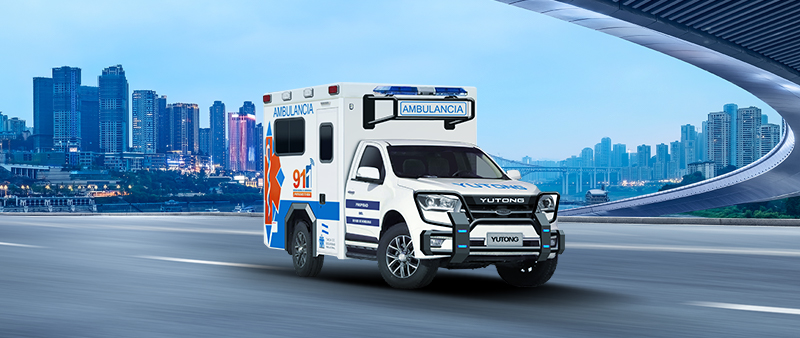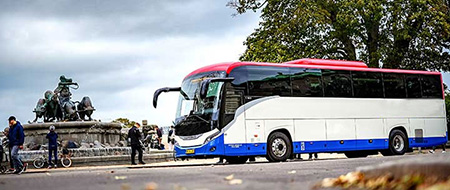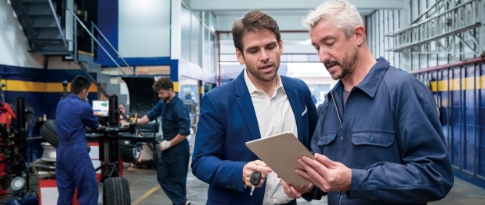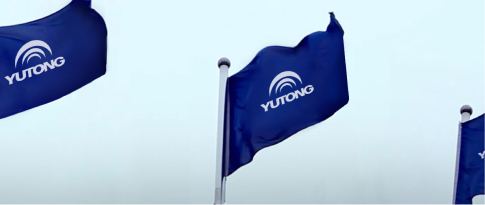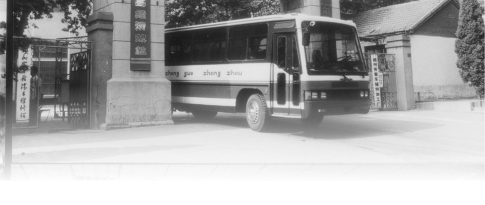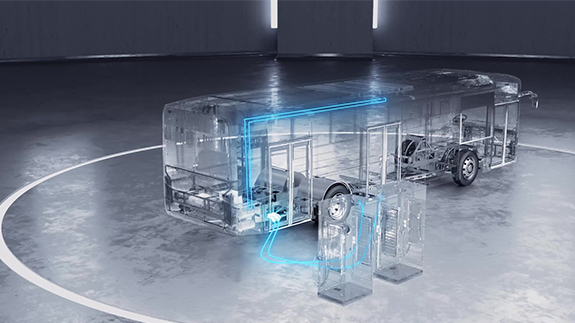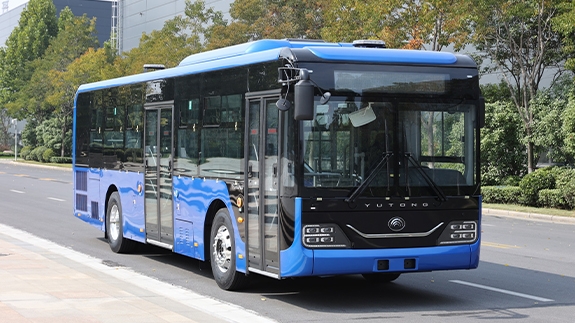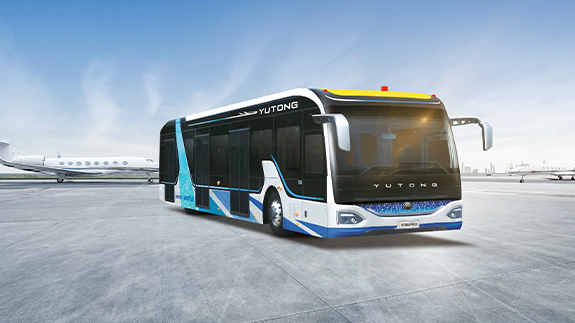Electric Bus Charging in Europe: Current Modes, Yutong’s Solutions, and Future Outlook
Public transportation in Europe is swiftly transitioning towards electrification, propelled by robust regulatory policies and climate commitments. The European Commission’s legislative proposal in 2023 stipulates that all new city buses registered from 2030 onwards must be zero-emission[1].
In this context, as electric bus fleets expand rapidly, bus operators, public transport authorities, and other key stakeholders face mounting pressure to develop comprehensive charging solutions to address the growing demand for charging infrastructure.

Electric Bus Charging in Europe: Current Modes
There are two charging methods available currently:
1.Opportunity charging
Opportunity charging involves placing fast-charging equipment at terminals or dispatch depots. Typically via pantograph charging, electric buses receive a rapid charge during scheduled operational breaks(10-30 minutes).
-
Scenario: Terminals or dispatch depots
-
Advantages: Opportunity charging reduces vehicle downtime by utilizing planned intervals for recharging, allowing buses to resume service quickly. The extended range per charge combined with rapid energy replenishment enables flexible vehicle dispatching, ensures uninterrupted operation, and ultimately reduces reserve fleet needs and total procurement costs.
-
Challenges: In addition to overnight charging infrastructure, high-power charging stations must be built at specific locations, requiring high initial investment costs. Vehicles need larger battery capacities and advanced charging systems.
2.Depot charging
Depot charging is the most common and widely used mode where vehicles recharge fully at centralized depots during off-service hours (typically overnight).
Scenario: Bus depots or centralized charging stations
Advantage: Long single-charge range facilitates flexible vehicle dispatching. Charging is scheduled separately from service hours for precise alignment of fleet size, battery configuration, and charging power. Charging during off-peak grid periods also optimizes energy costs.
Challenge: Long charging durations hinder emergency dispatching capabilities. The requirement for high-capacity battery systems increases per-vehicle procurement costs.
Yutong’s Technological Solutions for Electric Bus Charging
As a global electric bus manufacturer, Yutong brings technological solutions that address the challenges and make electric bus charging more efficient and reliable:
1. Independent Dual-plug Charging Technology
Yutong electric buses are equipped with independent dual-plug charging technology, which achieves a maximum total charging current of 600A under natural cooling mode with two independent charging ports. Each Yutong bus can use either dual plugs from one pile or simultaneously connect to two different-brand piles in parallel. By leveraging existing charging infrastructure instead of building costly ultra-high-power charging equipment, this solution optimizes resource utilization while cutting infrastructure costs.
This dual-gun independent charging solution doubles the efficiency of conventional naturally-cooling single-plug charging systems, achieving charging speeds comparable to single-plug liquid-cooling supercharging. For buses equipped with a 500–650 kWh battery capacity, centralized overnight charging time is reduced from 4–5 hours to 1.5–3 hours. A 15-minute opportunity charging can increase the driving range by up to 80–100 km, addressing urgent operational needs in critical scenarios.
2.Liquid Cooling Supercharging Technology
The liquid-cooling supercharging technology integrates immersion-cooled connectors and an upgraded vehicle charging topology, enabling megawatt-level charging without reliance on specialized infrastructure like pantographs. It offers strong compatibility, lower investment costs for charging equipment, and broad applicability across different platforms. Compared to conventional naturally-cooling charging plugs, liquid-cooling versions feature lighter weight, more flexible cables, and easier handling. With 15-minute charging adding up to 150-180 km of range and full charges achievable within an hour, future upgrades will boost efficiency to 300 km per 15-minute charge.
Whether it’s opportunity charging, depot charging, or complex hybrid charging scenarios, Yutong can provide optimal technical solutions tailored to customer needs and operating scenarios, and offer efficient, scalable, and future-ready integrated solutions to the key challenges faced by electric bus operators.
A Future Outlook of Electric Bus Charging in Europe
While Europe’s current electric bus charging infrastructure continues to evolve, several advanced technologies are emerging as promising alternatives to traditional charging methods.
1.Battery Swapping
One of the most talked-about innovations in electric bus charging is battery swapping. Electric buses equipped with this system eliminate plug-in charging by replacing depleted battery packs with fully charged units at dedicated swap stations, a process completed within minutes, significantly faster than conventional charging.
This method has been widely adopted across China’s heavy-duty truck industry, including dump trucks, tractor trucks, and mining trucks. Multiple battery swapping solutions coexist such as chassis-mounted swapping, rear-mounted swapping, and side-mounted swapping. Standardized industry protocols have been established to maximize operational efficiency in continuous operation scenarios, with particular adoption in regions prioritizing minimized downtime[2]. Yutong has commercially deployed battery-swapping dump trucks and tractor trucks in China.
2.Electric Road System
Another emerging approach is the Electric Road Systems (ERS). These systems embed charging technology directly into roadways, allowing vehicles to receive power while moving. Depending on the configuration, energy can be transferred through overhead catenaries, ground-based conductive rails, or subsurface induction coils.
Trials are already underway in Sweden, where highways are being adapted to test these systems under real-world conditions[3]. Yutong also established a dynamic wireless power transfer (DWPT) test platform in 2018. If scaled effectively, ERS could allow electric buses to operate with smaller onboard batteries, reduce charging station dependency, and increase range without operational interruptions.
Conclusion
Europe’s electric bus transition demands solutions that are efficient, reliable, and adaptable. Yutong supports this shift by offering technologies that help operators cut costs, enhance efficiency, and move toward cleaner transport systems. Looking ahead, Yutong remains committed to deepening its presence in Europe and advancing sustainable mobility across the region.
References
[1] https://ec.europa.eu/commission/presscorner/detail/en/ip_23_762
[2] https://www.iea.org/reports/global-ev-outlook-2024/trends-in-electric-vehicle-charging#:~:text=Battery%20swapping%20can,existing%20battery%20technology.
[3] https://www.euronews.com/next/2023/05/09/sweden-is-building-the-worlds-first-permanent-electrified-road-for-evs-to-charge-while-dri
Previous Industry-insights
Subscribe Now
Get updates you care about.
Submit
